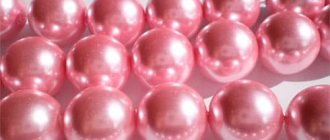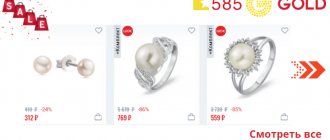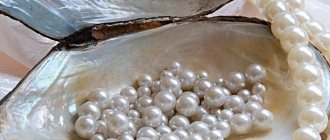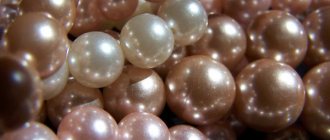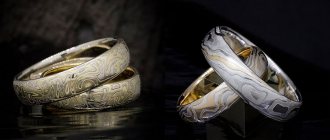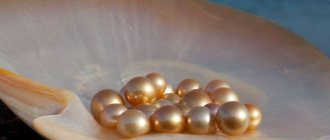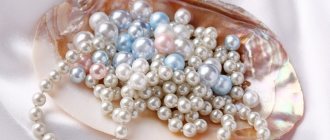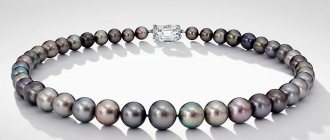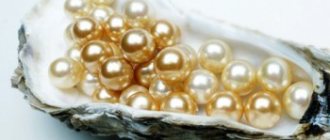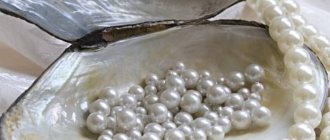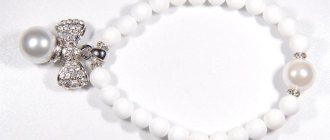For a long time, Russia was a leader in the production of pearls, a symbol of good luck and wealth. There was enough mother-of-pearl for both peasant women and court ladies, and there was still some left for export. And suddenly the palm in the extraction of organic minerals passed to Japan. Where are pearls mined in Russia now?
Pearl mining in Russia
What are freshwater pearls?
Freshwater pearls are amazing and attract with their natural beauty. In ancient times it was revered, giving the mineral a certain mystical component. For example, in Slavic trade chronicles, it was called “tears of happiness,” symbolizing longevity and beauty.
Nature is not used to creating everything “as a carbon copy.” All her creations are unique. This also applies to freshwater pearls, which differ from artificial pearls primarily in their diversity. A person is not able to see with his own eyes how a new gem is formed inside an oyster, nor is he able to speed up the natural course of things. The “production” of freshwater pearls remains an incomprehensible mystery.
Freshwater pearls can also be divided into two varieties: pearls created without human intervention and those cultivated by him. In the first case, this is a simple search for a cluster of oysters and mechanical collection of beads. Sometimes to the detriment of the ecosystem. The second case involves the artificial cultivation of freshwater oysters by humans. This mineral is a regular in jewelry stores.
In nature, freshwater pearls are found exclusively in light shades. It can be cream, milky, light blue or soft pink shades. Dark pearls do not occur in nature. Black pearls are the result of human dyeing.
"Counted out by the handful, like peas"
On March 18, 1736, the Senate decree allowed everyone to freely catch pearls in rivers and lakes, no matter who they belonged to, but with the condition: clean and large pearls should be presented to the governors and administrators in the cities for sending them to the Commerce Collegium, which was supposed to appoint “ a satisfied reward” to its owner.
“And those nobles from the former Berg College who were involved in that pearl fishing,” the Senate indicated, “should be dismissed and sent to the Heraldry Office.”
After this, pearl mining quickly increased. Historians claim that only on the rivers of the White Sea region - Kereti, Kemi, Umba, Varzuga and others - by the end of the 18th century, pearls worth 200 thousand rubles were caught per year, and from abroad they were brought to St. Petersburg in 1802 for 11,500 rubles .
Stocks of pearls in merchant families, both in the form of women's jewelry and in bulk, increased significantly. Thus, in the city of Toropets (Pskov province), which successfully traded with foreign countries in the 18th century, hundreds of kilograms of pearls accumulated. Historian M.I. Semevsky wrote:
“The merchants had a lot of pearls: they used to share them, so where to hang them, they just counted them out in handfuls, like peas... But in 1836, there were only 76 merchant families left. Trade moved to Berdichev and other cities: the Torop residents settled on petty trade in haberdashery goods, Instead of Germans, they made acquaintances with Jews... They smuggled a lot of goods from here, and most of all pearls; they say they took it out in fours (there are 26.24 liters in a four. - “History”
)».
There were also legends about the pearl reserves of the residents of Kaluga.
“The wealth of Kaluga residents,” wrote Doctor of Philosophy of Moscow University G. K. Zelnitsky, who worked as a teacher at the Kaluga public school and gymnasium from 1786 to 1804, “can be judged by the number of one pearl, which in Kaluga can be collected according to the average proportional number per 10 million rubles, so you need a couple of good horses to lift it.”
“The Empress is young, beautiful and graceful. She has a lot of pearls and diamonds"
Photo: Fine Art Images/Heritage Images/Getty Images
“The Empress is young, beautiful and graceful. She has a lot of pearls and diamonds"
Photo: Fine Art Images/Heritage Images/Getty Images
And the magazine “Urania”, published in Kaluga in 1804, reported:
“The women here were terrible hunters of pearls, which were valued above expensive stones. It was often possible to see pearls of up to 160 spools on a woman (almost 700 - “History”
), costing up to 5,000 rubles or more.”
Pearls were loved both in the upper strata of St. Petersburg society and in the royal family.
The French ambassador Savary, thinking about gifts for the Russian court, “which would be received here with the greatest pleasure,” wrote to Talleyrand from St. Petersburg on August 11, 1807:
“I remember that magnificent dresses were sent to the Spanish queen. Such a gift would be greatly appreciated here. The Empress is young, beautiful and graceful. She has a lot of pearls and diamonds, but not a single dress made of beautiful material and well made.”
According to the recollections of contemporaries, the string of pearls of the maid of honor A. A. Orlova-Chesmenskaya could compete with the pearls of Empress Elizabeth Alekseevna. And at the end of the 1820s, all of secular St. Petersburg admired the amazing pearls of the famous beauty A.F. Zakrevskaya, wife of the Minister of Internal Affairs A.A. Zakrevsky.
Of course, their jewelry was not made from Russian river pearls, but from foreign ones, from the bottom of the sea.
But some economists of the 19th century argued that sometimes northern pearls of rare beauty were sold abroad, and from there they were brought to Russia as foreign ones.
Muscovites were also keen on pearls. Russian memoirist E. A. Sushkova, who arrived in May 1833 from St. Petersburg to Moscow, wrote in her diary:
“The toilets here are of amazing diversity - the hair on the head is not visible because of the whole flower bushes, the ferroniers are replaced by chains and pearls that completely cover the forehead, corsages en pointe (with a sharp end facing the ground. - “History”
) and this last one is decorated with bronze, precious stones, pearls... even the caps, instead of ribbons, are also decorated with pearls. In St. Petersburg they would take me for a liar if I tried to describe such an outfit... It’s hard to believe what kind of taste Muscovites have.”
But it was precisely this taste that several Moscow jewelry firms owed their prosperity, trading exclusively in products made from Russian pearls until the end of the 19th century.
“Since the development of this fishery, pearl fishing began to decrease every year”
Photo: Boris Kuzmin / Photo archive of Ogonyok magazine
“Since the development of this fishery, pearl fishing began to decrease every year”
Photo: Boris Kuzmin / Photo archive of Ogonyok magazine
Extraction, location, processing
Man will never be able to create something better than nature. This also applies to river pearls. Those specimens created without human intervention are truly stunning in their completed form. Such pearls are usually found in rich collections of collectors and do not end up on the shelves of jewelry stores.
Basically, the jewelry used is those river pearls that are obtained by cultivating freshwater oysters. The production technology may seem simple, but it is quite labor-intensive in terms of time spent. It all starts with a mature oyster being carefully injected with a mother-of-pearl implant that she must recognize as her own.
Next, over the course of 3 years, the oyster covers this implant with numerous layers of mother-of-pearl. At the end of the period, the oyster is opened and the finished pearl is taken out. Similar cultivation of freshwater pearls is carried out in Russia, America, China and Germany.
Where are pearls mined in Russia?
According to statistics, 90% of all pearls mined in the world are concentrated on specialized farms. Since the 30-40s of the 20th century, this technology has been successfully used in Russia.
View this post on Instagram
Publication from Cabochons, beads, pendants (@charm.beads) Sep 5, 2019 at 10:26 PDT
Today, the origin of pearls occurs in bodies of water:
- Karelia;
- Kola Peninsula;
- Novgorod region;
- Leningrad region.
In the cleanest rivers of Russia there is a gradual recovery in the number of mollusks. Every year, hundreds of pearlescent minerals are retrieved from the bottom of rivers. Unfortunately, there are no such volumes of pearl mining as before. This is because from 1991 to this day, only gentle pearl mining is allowed, which involves partially opening the shell valves (to avoid the death of oysters).
There are still rivers on the territory of our country where there are significant margaritana populations. These are the largest pearls existing in the world. They can live only in those reservoirs where salmon fish are found. Our task is to clean up the reservoirs, thereby increasing the population of salmon and margaritas. The process is expensive and long, but the result is worth it.
INTERESTING: Properties of white agate.
Today in Russia, farms engaged in the extraction of cultured pearls have become very popular. Most of them are located on the northern rivers of the country.
Russian pearls: where they were mined
The pearl fishery in the north-west of Russia cannot be called anything other than legendary: for our ancestors, pearl fishing was a subject of special reverence, for foreigners it remained a curiosity for many centuries, and for contemporaries it became almost a fable.
Take a steam bath, put on clean clothes, repent and absolve your sins with a priest, forget about quarrels - these were the conditions for a successful search for pearls. In Rus' they believed: it is not given into the hands of an evil person. And it doesn’t get underfoot: the catchers wandered along small rivers, feeling the bottom. And it won’t even fit into your mouth - to harden, the pearls were placed in your mouth for a couple of hours.
The birth of pearls was shrouded in mystery for our ancestors, and therefore many myths appeared around it. It was considered both a special spark deposited by salmon in its shell and a living fruit of the mollusk. In the minds of the people, pearls became inextricably linked with the miracle of life and unconditional beauty, and the attitude towards them was extremely reverent: according to some beliefs, pearls, which did not tolerate falsehood, should only be given to beloved women.
Northern women could not imagine their wedding attire without pearls, and in general, pearls accompanied the brightest and most significant moments in the life of a common person: they decorated not only wedding dresses, but also icon frames, clergy vestments, and numerous church utensils.
Pearls in the north-west of Rus' were mined in a hundred rivers: there, despite their abundance, they were always especially valued as decoration, since others were practically inaccessible to the northerners. Pearls in the house spoke of the family’s hard work and accuracy: not only mining, but also working with them required painstaking care. Therefore, they were more willing to take as a bride the one whose dowry included outfits richly embroidered with pearls. The abundance of pearl cones on one of the varieties of kokoshniks was associated with the girl’s fertility.
Of course, northern river pearls were often mixed with sea pearls from the Indian Ocean. And the overcrowding of the market and high competition among fishers, resellers and sellers led to the fact that local pearls were simply sent abroad on ships, and from there they were imported again and traded as “oriental”, that is, obtained in the then fashionable tropical seas. This caused not only misconceptions, but also the inability to fully assess the volume of the fishery.
We can only say with confidence that Russia has long maintained its leadership among pearl exporters. The pearls mined in the northern rivers were distinguished not only by their regular shape, but also by a variety of colors: from silver-white to bluish.
Under Fyodor Ioannovich, Russia was already officially trading in “Novgorod pearls” from the Dvina and Novgorod lands, according to documents. Under Peter I, an attempt was made to control the pearl industry: the tsar appointed special officials to supervise the process and hire workers to carry out the extraction. But the ban on fishing for private individuals led to a deterioration in the situation of the industry, and officials stole.
People were again allowed to search for pearls, but on the condition of paying a large tax to the treasury. Catherine II again tried to control the pearl fishers, but the predatory volumes of harvest still led to the disappearance of pearl mussels in some rivers.
Be that as it may, the reserves of pearls were so large that in the 19th and early 20th centuries, official export figures ranged from 200 to 300 thousand rubles in gold. The peasants took advantage of the moment and took out their “pearl ticket”. For example, the peasant A. Lipkin from Kemsky district sent a batch of pearls to the palace office, for which he was given a reward of 120 rubles. Later, having sent 70 pearls to Empress Maria Feodorovna, he received a reward of 400 rubles.
Nowadays, freshwater pearls can hardly be called part of the material wealth of Russia - the rivers have become poor in pearl mussels for various reasons: hydraulic construction, predatory fishing, water pollution, timber rafting and the death of fish that are carriers of pearl mussel larvae. But this wonderful decoration is still part of the cultural heritage of Russia, preserved in numerous pearl embroideries.
And yet, in the basins of the Solza and Onega rivers, the pearl mussel has survived to this day, and perhaps, if measures are taken to increase its population, Russia will once again shine with the mother-of-pearl shine of its river treasures.
Add a comment
To leave a comment, please log in
What is the difference between freshwater pearls and sea pearls?
Freshwater pearls are also different from sea pearls. In general, they are similar to each other, but there are still a number of points that should be taken into account when determining the type of pearl.
- Freshwater pearls are more elongated in shape, while sea minerals have a spherical ideal shape.
- The pearl essence of the sea mineral is more intense than that of the river one. This can be reflected in the intensity of color and shine.
- The nacre content of river pearls is significantly higher than that of sea pearls, where the nacre layer usually does not exceed 6 mm.
- The growth time between river and sea pearls varies significantly. Typically, the ripening period for river pearls is 2-3 years, while sea mollusks can take up to 6 years. As a result, mineral sizes may vary.
- The duration of production also affects the price of pearls. It is worth noting that freshwater pearls in jewelry stores can cost 1,500-2,000 rubles, while sea pearls are valued at 16,000 rubles.
“It’s harmless to pay these advertisers”
The angry Tsar-Transformer ordered the Berg College to draw up a decree “On pearl fishing,” which was promulgated on June 8, 1721. The decree read:
“His Majesty, our Most Gracious Tsar and Sovereign knows that in the Russian countries of His Autocracy, in some rivers and small rivers, pearls will be born in shells, only the Russian people are unique in how and at what time and in what places to get them "
From June 8, 1721, all ordinary people, no matter what their rank, were prohibited from catching pearl shells without special permission. The governors were ordered to describe in detail the already known and newly discovered pearl rivers, indicating their coordinates and “where these rivers came from and where they flowed.”
It was decided to “assign people of good conscience from officers or nobles” to the areas with pearls, swearing them all in. The text of the oath was included in the decree. Its beginning was frighteningly pathetic:
“I promise and swear by Almighty God and His Holy Gospel that by the decree of His Royal Majesty, my Most Gracious Tsar and Sovereign, from the State Berg College, I have been entrusted with pearl fishing, and I have been established for such a task; For this reason, I want and promise to be faithful and fair to His Royal Majesty in the matter entrusted to me, and all rights belonging to His Majesty’s High Autocracy, power and strength, according to the utmost of my reason and ability to guard...”
From now on, pearl fishing could only be done in July, August and September. It was allowed to open only “perfect” shells with signs of females, and males “with care, so as not to damage, put them back into the water” (the signs of both were given in the decree). Violation of these rules was punishable by a huge fine of one hundred rubles.
Those who caught pearls “for themselves” and not for the sovereign were subject to the same fine.
“And whoever in that Province, before this decree, already has such pearls caught,” explained the Berg College, “and those people should be recorded and announced to them, so that they announce those pearls to the Voivodes without fear, which they, the Voivodes, have Having accepted those people, and having assessed them as merchants and nobles, they were ordered to innocuously pay the advertisers three shares at the present price, against the assessment, and count the fourth from them to the Sovereign. And so that, from the previous fishing, the pearls that were caught until this year 1721, and whoever has them, all in the current year 1721, were sold to His Sovereign; from now on, no one will be given permission to fish for their own pearls.”
12 nobles were assigned to the state pearl fishing in different areas, and a guard of peasants was assigned to the rivers, “in the appropriate places.”
During the 10 years of the state monopoly on pearl fishing, 4,936 pearls of different varieties were sent to the Berg College. In 1732, the Senate demanded from the Commerce Collegium an opinion on “whether these fisheries should be kept by the state or given freedom.” She reported that the treasury spent 229 rubles on this industry, and 87 rubles worth of pearls were delivered, and even those were “of the most blue and dark variety.” And she admitted that there was no profit for the treasury from the pearl industry, “but it was also a wasted loss.”
The Senate decided that everything needed to change in the pearl business.
“You could often see up to 160 spools of pearls on a woman, costing up to 5,000 rubles or more.”
Photo: RIA Novosti
“You could often see up to 160 spools of pearls on a woman, costing up to 5,000 rubles or more.”
Photo: RIA Novosti
Magic properties
Pearls owe their magical properties to the Moon. But they do not share this strong energy with everyone, but only with a select few. This cannot be done without the influence of Venus and Neptune, which endowed white beads with the ability to attract the attention of others to their owner.
View this post on Instagram
Posted by Silver Leto (@silver_leto) Aug 14, 2022 at 2:45 PDT
A few interesting factors:
- Women in Ancient Greece believed that it was necessary to buy pearls before getting married, so that this amulet would help bring them together with a faithful person.
- In the Middle Ages, pearls were considered tears shed by innocent children and souls. They were used to decorate wedding attire, as they believed that this would strengthen the union of two hearts.
Why should you always carry freshwater pearls and their jewelry with you?
- Helps you make new useful contacts. True friends who will never leave you in trouble.
- A person becomes calmer and is capable of making the right decisions, adequately assessing the current situation.
- Pearls help to find peace and beauty (both external and internal).
- Prolongs life and makes it happier.
- Gives strength and self-confidence.
Only those who are not afraid of change and confidently move towards their goal will be able to feel the magical effects of freshwater pearls. The mineral chooses those who are ready to act quickly when needed, following their heart. Indecisive people and those who are not responsible for their actions are not recommended to wear pearls, because it can even cause harm.
It is believed that if there is no love, respect and mutual understanding in a family, then pearls fade and do not flicker in the sun.
A small educational program about how a pearl is formed in nature
Do you know what pearls are? If you think that this is a precious jewelry stone, you are partly right. Indeed, pearls are classified as a group of mineral stones of animal origin. Surely you have heard about ama divers in Japan. Previously, they used their hands to extract shells from the bottom of the sea, many of which actually had pearls inside.
Do you think that pearls are still mined using the same method today, and that all other mother-of-pearl beads are simply fake? Here is the error. In the modern world, people rarely risk their health for the sake of earning money. Almost all pearls available for purchase are grown independently. They do not fake it as wild, but rather grow it in the shells of live mollusks.
This method significantly simplified the process and increased the scale of production. There is no longer any need to explore the seabed, raising thousands of oysters, of which only a few hundred will have pearls inside and only dozens will have beads suitable for sale.
The world is no longer looking for an answer to the question of how to get pearls, but they are growing them on farms like potatoes. And all because several hundred years ago people learned to stimulate mollusks to produce nacre to create a valuable “pea”.
If previously the entry of a grain of sand or an air bubble into a sink was completely accidental, today it depends on the person. It is he who plants a mother-of-pearl bead or a piece of the mantle of another mollusk into a living organism, provoking the manifestation of irritation in the latter. The result is a predictable process of enveloping a foreign body in layers of nacre for neutralization over several years.
The result of the joint actions of representatives of the marine and human worlds is a mother-of-pearl pearl. She is highly valued by jewelers and simply adored by fashionistas from all over the world. The demand for cultured pearls is growing, and along with it, the farms for their cultivation are growing. Serious efforts are still made to obtain the “harvest,” but even this cannot be compared with the Herculean efforts and risks that were required of divers in past times.
Medicinal properties
Wearing jewelry with pearls will have a positive effect on:
- state of the nervous system;
- vegetative;
- lymphatic;
- the work of blood vessels and the heart (it is customary to put a ring with a stone on the ring finger of the right or left hand).
View this post on Instagram
Publication from WEDDING, EVENING DECORATION (@asira_official_) January 21, 2022 at 7:19 PST
How to charge water with a pearl?
- Drop a few pearls into a glass of water.
- Let it sit in a dark place for 12 hours.
This infusion helps normalize the body's production of blood cells. If you have any inflammation, it will gradually decrease.
Who is suitable according to their zodiac sign?
The element of freshwater pearls is Water. Therefore, it is ideal for water and air signs of the Zodiac.
To whom freshwater pearls will bring good luck:
- Pisces. Women will find their soul mate and build a happy marriage. All owners of the sign will become more rational, decisive and reasonable.
- Aquarius. It will help you get rid of the negative influence of others and not pay attention to minor problems that prevent you from achieving your main goal. It will also have a positive effect on the psyche. People will be less exposed to stress and neuroses. To pull yourself together, just hold the pearls for 10-15 minutes. Also, it pushes people to make the right decisions.
- Gemini. Gives you self-confidence, promotes career growth and helps you achieve your goals.
- Taurus. Gain calmness and confidence.
- Scorpios. They will be able to cope with their not the best qualities.
- Cancers. Freshwater pearls will suit them not only as a talisman, but also as a medicine (it will relieve overwork and heart problems).
- Scales. They will begin to look at things and perceive the world around them easier.
Who is the mineral not suitable for?
Astrologers note that pearls are not the best talisman for such zodiac signs as Aries, Sagittarius and Leo. Also, it is not suitable for Virgos who are very afraid of something. Otherwise, their fear may only increase.
Care and storage
It is recommended to store freshwater pearl jewelry in boxes and fabric bags. It is enough to clean the product 1-2 times a month. To do this, you need to make a soap solution and take a soft cloth. Do not use shampoos or detergents under any circumstances, otherwise the appearance of the product may be damaged.
WE RECOMMEND: The magical properties of bronzite stone.
What to do if the pearls become tarnished? In this case, there is only one way out - contact a jeweler. It is possible that it will need a coating of mother-of-pearl to renew the old layer.
Price
The price of beads made from river pearls is less than the cost of a similar piece of jewelry made from sea pearls. The cost is influenced by the following factors: the presence of defects, shine, colors and the origin of the mineral. Also, the price includes the costs that go into growing the shellfish.
You can buy a natural pearl mined at sea for 1-10 thousand dollars. The cost of a bracelet made of freshwater pearls is from 3,000 to 6,000 rubles, and a necklace with uneven pearls is from 12,000 to 14,000 rubles. Everyone can afford to buy rings with artificial pearls.
Even if freshwater pearls are not as beautiful as sea pearls, they still have a high value. If previously mining was carried out all over the world, now its scale has decreased significantly. For this reason, most items in jewelry stores consist of pearls harvested from specialized farms.
Fresh water production
Mining of the freshwater mineral mainly comes from:
- USA;
- Germany;
- England;
- China;
- some northern rivers of Russia.
Freshwater pearls are characterized by their small size and non-standard shape. It is dimmer than sea, but is particularly durable and reliable. The color palette is dominated by pink or grayish color with a matte pearlescent tint.
